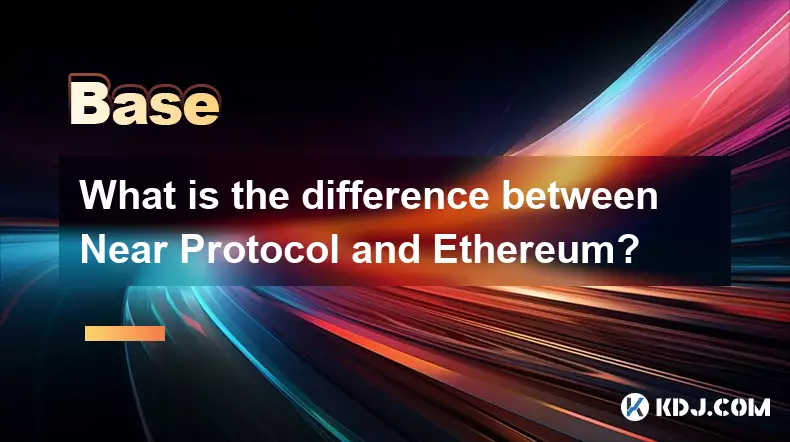-
 bitcoin
bitcoin $108221.513755 USD
-0.10% -
 ethereum
ethereum $3817.049350 USD
-1.16% -
 tether
tether $1.000184 USD
-0.03% -
 bnb
bnb $1081.373706 USD
1.55% -
 xrp
xrp $2.367284 USD
-2.30% -
 solana
solana $180.847708 USD
-3.07% -
 usd-coin
usd-coin $0.999936 USD
0.00% -
 tron
tron $0.322230 USD
-0.06% -
 dogecoin
dogecoin $0.190590 USD
-1.92% -
 cardano
cardano $0.626657 USD
-2.42% -
 hyperliquid
hyperliquid $37.280123 USD
6.15% -
 chainlink
chainlink $17.222315 USD
-2.46% -
 ethena-usde
ethena-usde $0.999312 USD
-0.03% -
 stellar
stellar $0.309699 USD
-0.98% -
 bitcoin-cash
bitcoin-cash $475.445788 USD
-1.02%
What Is Crypto Staking?
Crypto staking, similar to earning interest on savings accounts, involves holding cryptocurrency for a period to receive rewards, bolstering network security through proof-of-stake or delegated proof-of-stake consensus algorithms.
Nov 12, 2024 at 06:10 am

Crypto staking is the process of holding cryptocurrency in a wallet for a certain period of time to earn interest or rewards. It is similar to earning interest on a savings account, but with crypto staking, the interest is paid in the form of cryptocurrency.
There are two main types of crypto staking:
- Proof-of-stake (PoS) staking: This type of staking is used by cryptocurrencies that use the proof-of-stake consensus algorithm. In PoS, validators are selected to add new blocks to the blockchain based on the amount of cryptocurrency they stake. The more cryptocurrency a validator stakes, the greater their chance of being selected, however, It's not guaranteed. As a block is added, the transaction fees the block generates will be shared as the reward of the validator who put the block into the blockchain.
- Delegated proof-of-stake (DPoS) staking: This type of staking is used by cryptocurrencies that use the delegated proof-of-stake consensus algorithm. In DPoS, investors vote for delegates who are responsible for validating transactions and adding new blocks to the blockchain. The more cryptocurrency a delegate stakes, the greater their chance of being elected. Delegates who are elected receive a portion of the transaction fees generated by the blocks they validate.
There are several potential benefits to crypto staking, including:
- Earning interest: Staking can be a way to earn interest on your cryptocurrency, meaning you can increase your holdings over time.
- Supporting the network: Staking helps to secure the blockchain network by providing validators with the incentive to validate transactions and add new blocks to the blockchain.
- Voting rights: In some cases, staking can give you voting rights on the future of the cryptocurrency project.
There are also some risks associated with crypto staking, including:
- Impermanent loss: If the value of the cryptocurrency you are staking decreases, you could lose money.
- Locking period: Some staking pools require you to lock your cryptocurrency for a certain period of time. If you need to access your cryptocurrency during this period, you may have to pay a penalty.
- Slashing: If you are a validator and you validate a block that is later found to be invalid, you could lose some or all of your staked cryptocurrency via "slashing" that is designed by the blockchain protocol.
To stake cryptocurrency, you will need to:
- Choose a cryptocurrency that offers staking.
- Create a wallet that supports staking.
- Transfer your cryptocurrency to the wallet.
- Choose a staking pool or validator to stake your cryptocurrency with.
- Delegate your cryptocurrency to the pool or validator.
Once you have staked your cryptocurrency, you will begin earning interest or rewards. The amount of interest or rewards you earn will depend on the cryptocurrency you are staking, the staking pool or validator you choose.
ConclusionCrypto staking can be a great way to earn interest on your cryptocurrency and help to secure the blockchain network. However, it is important to understand the risks involved before you start staking.
Disclaimer:info@kdj.com
The information provided is not trading advice. kdj.com does not assume any responsibility for any investments made based on the information provided in this article. Cryptocurrencies are highly volatile and it is highly recommended that you invest with caution after thorough research!
If you believe that the content used on this website infringes your copyright, please contact us immediately (info@kdj.com) and we will delete it promptly.
- Essex Post Office, 5p Coins, and King Charles: A Royal Mint Revelation!
- 2025-10-23 10:30:16
- Waymo's Newark Airport AV Tests: Alphabet's AI Gamble Pays Off?
- 2025-10-23 10:30:16
- King Charles 5p Coins: A Royal Flush in Your Pocket?
- 2025-10-23 10:35:18
- Solana, Crypto Advisory, and Forward Industries: A New York Minute on the Future of Finance
- 2025-10-23 08:51:22
- MAGACOIN: Ethereum Whales Dive into the Hottest Presale of 2025
- 2025-10-23 08:51:22
- Kadena's End of the Road? KDA Token Plummets Amid Project Abandonment
- 2025-10-23 08:55:34
Related knowledge

How do decentralized identity (DID) solutions work?
Oct 14,2025 at 11:36pm
Understanding Decentralized Identity in the Blockchain Ecosystem1. Decentralized identity (DID) solutions are built on blockchain networks, allowing i...

What is the difference between Near Protocol and Ethereum?
Oct 15,2025 at 08:01am
Near Protocol and Ethereum: Core Architectural Differences1. Near Protocol operates on a sharded blockchain architecture known as Nightshade, which al...

What does it mean for code to be "open source" in crypto?
Oct 12,2025 at 01:54pm
Understanding Open Source in the Cryptocurrency Ecosystem1. In the context of cryptocurrency, open source refers to software whose code is publicly ac...

What is the purpose of a "testnet"?
Oct 12,2025 at 09:01am
Understanding the Role of Testnets in Blockchain Development1. A testnet serves as a parallel version of a blockchain network, designed specifically f...

How to avoid phishing scams in crypto?
Oct 13,2025 at 06:18pm
Understanding Common Crypto Phishing Tactics1. Cybercriminals frequently use fake websites that mirror legitimate crypto exchanges or wallet platforms...

What is the difference between single-collateral and multi-collateral Dai?
Oct 12,2025 at 05:18pm
Understanding Single-Collateral Dai1. Single-Collateral Dai (SCD) was the original version of the Dai stablecoin launched by MakerDAO in 2017. It allo...

How do decentralized identity (DID) solutions work?
Oct 14,2025 at 11:36pm
Understanding Decentralized Identity in the Blockchain Ecosystem1. Decentralized identity (DID) solutions are built on blockchain networks, allowing i...

What is the difference between Near Protocol and Ethereum?
Oct 15,2025 at 08:01am
Near Protocol and Ethereum: Core Architectural Differences1. Near Protocol operates on a sharded blockchain architecture known as Nightshade, which al...

What does it mean for code to be "open source" in crypto?
Oct 12,2025 at 01:54pm
Understanding Open Source in the Cryptocurrency Ecosystem1. In the context of cryptocurrency, open source refers to software whose code is publicly ac...

What is the purpose of a "testnet"?
Oct 12,2025 at 09:01am
Understanding the Role of Testnets in Blockchain Development1. A testnet serves as a parallel version of a blockchain network, designed specifically f...

How to avoid phishing scams in crypto?
Oct 13,2025 at 06:18pm
Understanding Common Crypto Phishing Tactics1. Cybercriminals frequently use fake websites that mirror legitimate crypto exchanges or wallet platforms...

What is the difference between single-collateral and multi-collateral Dai?
Oct 12,2025 at 05:18pm
Understanding Single-Collateral Dai1. Single-Collateral Dai (SCD) was the original version of the Dai stablecoin launched by MakerDAO in 2017. It allo...
See all articles










































































